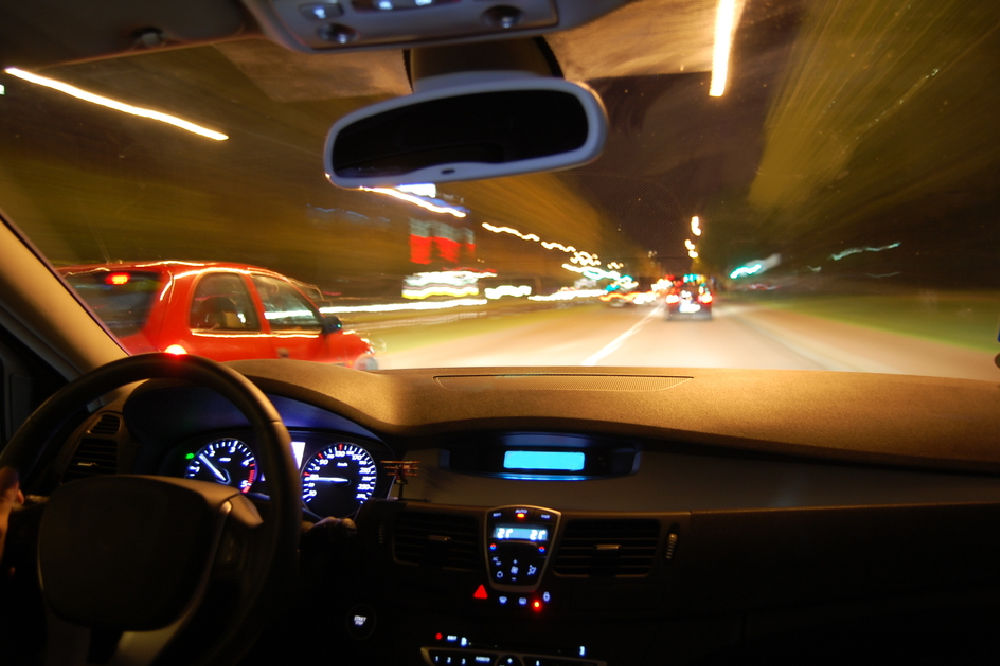Night driving may be a necessity, but it is a dangerous one. Nationally, fatalities caused by nighttime accidents increased by 12% between 2019 and 2020. In that same time period, daytime accidents increased by only 1.4%, according to figures from the National Highway Traffic Safety Administration (NHTSA).
The statistics in Indiana are also concerning. In 2020 there were:
- 25,766 accidents between 6:00 p.m. and 8:59 p.m.; 120 included fatalities.
- 14,020 accidents between 9:00 p.m. and 11:59 p.m.; 111 included fatalities.
- 7,657 accidents between 12:00 a.m. and 2:59 a.m.; 72 included fatalities.
- 8,016 accidents between 3:00 a.m. and 5:59 a.m.; 58 included fatalities.
What Are the Dangers of Driving at Night?
The obvious answer is the correct one: it is difficult to see at night. In addition, many people suffer from night blindness. What is night blindness? This condition (also called Nyctalopia) can be caused by nearsightedness, glaucoma medications, cataracts, retinitis pigmentosa, deficiency of Vitamin A, or diabetes and makes it difficult for someone to see in the dark or in dim lighting.
Vision Difficulties
Night driving is dangerous because many older drivers especially struggle to see well at night. The NSC (National Safety Council) warns that 50-year-old drivers need twice as much light to see as well as 30-year-old drivers. The American Optometric Association suggests that drivers over the age of 60 should take extra precautions (such as slowing down) when driving at night, simply because it is likely that their visual acuity has suffered with age.
Night Driving Glare
Glare is any source of light, such as oncoming headlights, that impairs your vision. The National Highway Traffic Safety Administration (NHTSA) noted that the number of complaints about glare from headlights was increasing. They stated that “Glare, especially due to increasing intensity, often causes discomfort to the driver as well as vision obstruction that may contribute to the occurrence of a crash.” Taking steps such as keeping your windshield clean, shifting your vision to the white line when a car is approaching, and putting your rearview mirror in “night” mode can help combat the effects of night driving glare.
Situational Hazards
However, you don’t have to officially suffer from night blindness or eye diseases to have trouble seeing when driving at night. You don’t even have to be over a certain age. Night driving is dangerous because situational night blindness can affect anyone. And when you consider other causes of nighttime accidents, such as drunk driving, evening rush hour driving, and fatigued driving (not to mention deer on rural roads), it’s obvious that night driving increases the risk of accidents.
Safety Tips to Offset the Problems of Night Driving
- Don’t turn on the interior lights in your car. Also, turn down the brightness of the instrument panel on your dashboard. This helps because the pupil (the black circle in the middle of your eye) opens more widely (dilates) to let light in when light is dim and contracts in bright light. If you are trying to see as much as possible on the dark road ahead, you don’t want to impede your eye’s adjustment to the darkness by having the pupil contract every time you check your speed.
- Slow down. Allow for extra space between your car and the car in front. If there is no car in front of you and you are driving on an otherwise unlit road, remember that your low beams illuminate only an average of 160-200 feet ahead of you. High beams illuminate an average of 300 feet ahead. Given the fact that it is difficult to see what is happening outside of your headlights, you have to give yourself sufficient time to stop if there is a hazard (vehicle, person, animal, or debris) on the road.
- Keep your car mirrors, windows, and headlights clean. Any smudges can impede your ability to see and exacerbate glare from oncoming headlights.
- This goes without saying, but do not drink and drive. Also, if you are tired, pull over and take a break. It is easy to be lulled into a drowsy state in the dark. Drowsy driving is responsible for an average of 100,000 crashes each year.
- Use your high beams when it is safe to do so. Many drivers forget how helpful high beams are and forget to switch them on. If another car is approaching, dim your lights.
- Avoid distractions. This means that you shouldn’t be texting, smoking, drinking, or carrying on spirited conversations. Focus on the road.
- Travel with a reflective piece of clothing in your car. If you break down or are involved in a fender bender, you can wear it to ensure that you are visible to other drivers. While you wait for help, stay off the road and out of danger.
Contact an Indianapolis Car Accident Attorney
If you have been involved in a nighttime car accident, you will benefit from the counsel of an experienced Indiana car accident attorney to help determine fault, negotiate with insurance companies, and navigate through the legal claims process.
Let Crossen Law Firm handle the fight for compensation. With over 20 years of experience and millions of dollars awarded in compensation to our clients, our Indianapolis personal injury lawyer understands how to best help you obtain a favorable outcome for your situation. Get started on your case today by scheduling a free consultation about your situation. Call 317-401-8626 or contact us online.

 317-401-8626
317-401-8626 
.jpg)